-
 Ever Wondered How to Make Paneer at Home? Here is the Complete Guide to Take Out Soft and Creamy Paneer from Milk at Home (2021)
Ever Wondered How to Make Paneer at Home? Here is the Complete Guide to Take Out Soft and Creamy Paneer from Milk at Home (2021)
-
 Want More Tantalizing Breakfast Ideas? Here are 6 Scrumptious Egg Recipes for Breakfast That Will Make You Want to Eat Eggs All Day (2020)
Want More Tantalizing Breakfast Ideas? Here are 6 Scrumptious Egg Recipes for Breakfast That Will Make You Want to Eat Eggs All Day (2020)
-
 How to Increase Weight: Foods to Include in Your Diet for Your Weight Gain Journey + Tips for Gaining Weight (2020)
How to Increase Weight: Foods to Include in Your Diet for Your Weight Gain Journey + Tips for Gaining Weight (2020)
Popular Winter Vegetables and Their Benefits
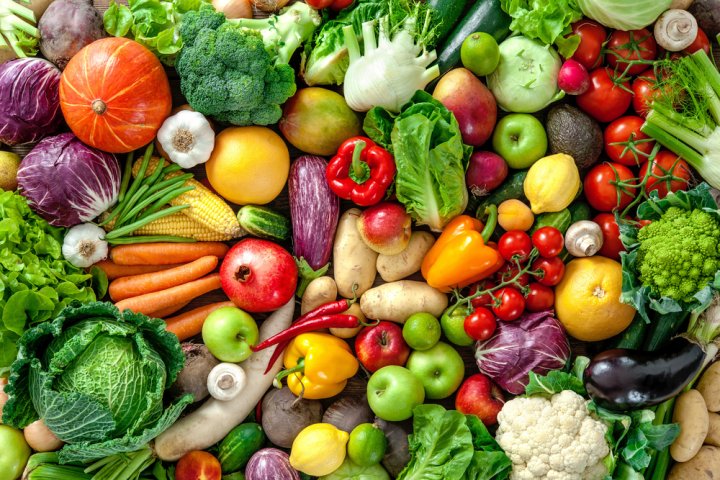
With the advent of Winter, various veggies and green leafy seasonal vegetables also start arriving and make their place in the kitchen. There are many vegetables that are seasonal and available mostly in winter; and various delicious and nutritious soups and dishes are being prepared from these veggies. These vegetables have their own unique taste, and also provide many health benefits in the winters. Few of the popular winter vegetables in season and the health benefits associated with them are mentioned below.
- Cauliflower – One of the members of the cabbage family, cauliflower is an all-season fruit but good quality cauliflower is found mainly in winters. This beautiful vegetable is full of nutrition and 100 gm of cauliflower contains about 25 calories, 5 gm carbohydrates, 2 gm sugar, 2 gm dietary fiber, 2 gm protein, and 30 mg sodium. Also, one serving (100 gm) of cauliflower contains 100% of the recommended amount of vitamin C required every day, 25% of the daily amount of Vitamin K, 6% of daily potassium, 2% of the daily required intake of iron, calcium, and about 3% of your daily magnesium. Health benefits include protecting cells from damage and preventing cancer due to its antiviral, anti-inflammatory, and antibacterial properties. Regular consumption of cauliflower is also beneficial in thyroid issues, heart problems, digestion, and gastrointestinal issues.
- Spinach – One of the many leafy vegetables which are readily available in winter is Spinach. It is full of health benefits and is used in various soups and dishes. Spinach is called a superfood not because Popeye gets his power from it, but it’s full of various benefits for your skin, bones, and hair. Spinach helps to prevent vision loss, avoids premature aging, and boosts immunity; it also has antioxidants which help prevent cancer and is helpful in chronic abdominal distress. Spinach is a good source of zinc, magnesium, a good amount of iron, and Vitamins A, B, C, E, and K. Few more benefits of spinach include - the ability to reduce high blood sugar, strengthens bones, helpful in weight loss, has anti-inflammatory properties, reduces hypertension, useful in anemia, acne and gives glowing skin.
- Carrots – Carrots are an excellent source of vitamins and contain vitamins A, B, B2, B3, C, D, E, and K. The carotene present in carrots is helpful for the eyes and prevents night blindness. Carrots also contain nutrients that are helpful in fighting diabetes, cancer and also prevent heart disease. Other health benefits of carrot are – useful to flush out toxins from the liver, reduces bile and fat in the liver, and cleanses your system; slows the aging process, and gives healthier skin.
- Beetroot – This maroon color root species veggie grows below the ground and is low in saturated fat and cholesterol. It is a good source of potassium, folate, manganese, Vitamin C, Vitamin B, copper, iron, magnesium, and dietary fiber. Beetroot is beneficial in regulating blood pressure, improves brain power, boosts physical stamina, helps bowel movement, has anti-inflammatory properties, cleans the blood and detoxifies your body. It also improves the radiance of your skin.
- White Radish – One more fruit from the group of root vegetables, white radish is crunchy and liked by many for its peppery and spicy taste. Radish has the goodness of Vitamin C, Vitamin A, Vitamin E, Vitamin B6, magnesium, sodium, potassium and has high water content which keeps you hydrated in the cold weather as we ought to drink less water during the winters. Radish prevents you from the risk of cancer, flu, and heart disease. Radish also aids digestion, helps in fighting cold and cough, regulates blood pressure, boosts immunity, and gives you glowing skin as well.
- Sweet Potatoes – Especially liked by children, sweet potato is one vegetable available only during winters and is a great staple to make various sweets. They are rich in beta-carotene, fiber, antioxidants, Vitamin A, Vitamin B6, and Vitamin C. Sweet potatoes have a low glycemic index which makes them a healthy food option that keeps you full for a long period due to the presence of fiber. Various health benefits of sweet potatoes include – prevention from flu, common cold, heart attack, constipation and is also helpful in the formation of blood cells. The magnesium content in this vegetable helps fight against stress and is also useful in losing weight.
- Green Peas – Though found throughout the year in frozen form at the grocery stores, it’s a winter vegetable and you’ll find fresh and green peas during winters as compared to the other times of the year. These Green pearls are loaded with vitamins which include Vitamin A, Vitamin B1, Vitamin B6, Vitamin C, and a good amount of Vitamin K which helps combat osteoporosis (weakening of bones). Vitamin K is especially beneficial for bone health and helps the blood to clot when bleeding.
Winter Vegetables in Season - Soups
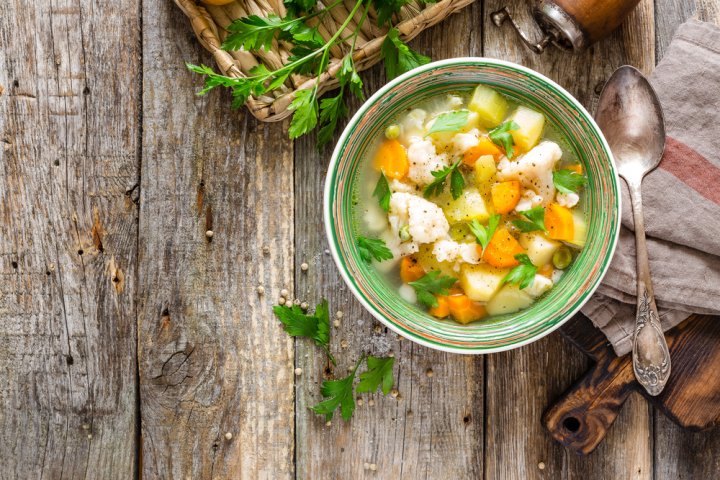
Having checked a few winter vegetables in season, the nutrition they offer, and their health benefits, now let’s explore soups that are packed with the goodness of winter vegetables.
Beetroot Onion Soup

A tasty continental soup that can be prepared and enjoyed at home during winters, the Beetroot Onion Soup will keep you warm in winters while providing the essential nutrients required.
Ingredients:
- 125 gm beetroot
- 1 tablespoon onion
- 1 tablespoon coriander leaves
- 1 cup milk
- 1/4 teaspoon black pepper
- 1½ tablespoon cornflour
- 1½ tablespoon butter
- ½ tablespoon sugar
- Salt
- Water as required for preparing this soup.
- Add the cornflour and ½ cup milk in a bowl, mix them well and start boiling this mixture in a pan on medium flame.
- Keep stirring the mixture until it gets a little thick. Now chop the beetroot and onion into small pieces and add them with water into a thick bottomed pan.
- At this time you can also add 1 tbsp butter to enhance the taste. Let this vegetable mixture simmer on low flame for 10 minutes.
- On the other hand, add the remaining ½ cup milk, pepper, salt, sugar, and water into the milk and cornflour mixture prepared earlier.
- Keep stirring on low flame for 3-4 minutes and then pour the veggie mix into this pan.
- Stir the entire mixture, bring it to a boil and then turn off the stove.
- Cover the lid for 30 minutes so that all the ingredients and flavors mix well.
- After 30 minutes, open the lid, heat the soup and garnish with coriander leaves before serving hot.
Recipe:
Winter Vegetable Soup

A nutritious and delicious winter vegetable soup provides you the much-needed warmth during winter and is also beneficial due to seasonal diseases like flu, cold, and cough.
Ingredients:
- ¼ cup onions (chopped)
- ¼ cup French beans (chopped)
- ¼ cup carrot cubes
- ¼ cup cauliflower florets
- ¼ cup tomato cubes (deseeded)
- ¾ cup cabbage (shredded)
- ¼ cup potato cubes
- 2 bay leaves
- 1 tbsp oil
- 1 veg seasoning cube (powdered)
- Salt and black pepper to taste.
- 2 tbsp coriander leaves (finely chopped)
- 2 tbsp cheese (grated).
- Firstly, heat oil in a non-stick pan; add the bay leaves and onions, and sauté for about a minute on medium flame.
- Now add the carrots, potatoes, cauliflower, and beans as well and saute for 2-3 minutes on medium heat.
- Now add 4 cups of water and mix well. Cook this mixture on a medium flame for about 20 minutes and keep stirring occasionally.
- Finally, add the tomatoes, cabbage, seasoning powder, pepper, and salt, give a good stir and cook again for 3-4 minutes on medium flame while stirring occasionally.
- Turn off the flame, pour in serving bowls, and garnish with coriander leaves and cheese before serving hot.
For Garnishing:
Recipe:
Winter Vegetables in Season - Main Course Recipes
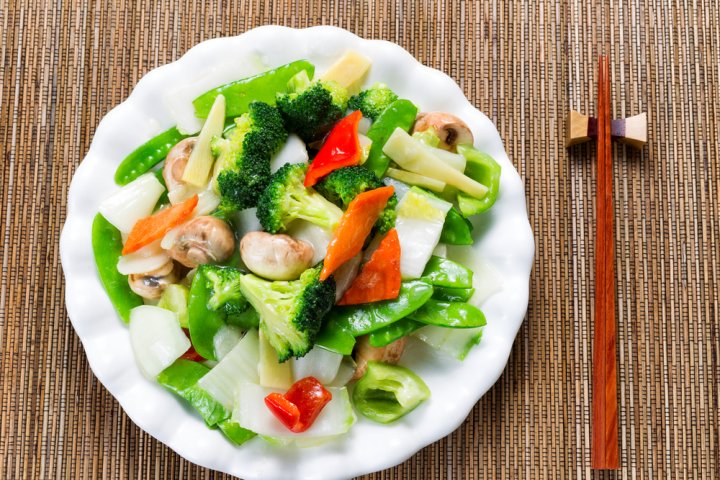
Let’s check a few delicious recipes which are prepared from the winter vegetables in season and you can relish them with your favorite bread after or along with the winter vegetable soups.
Sarson Ka Saag (Punjabi Style)
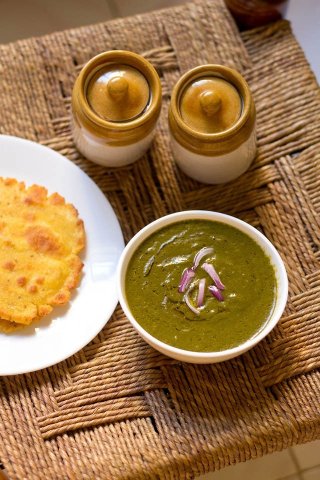
Sarson Ka Saag which literally translates to Mustard Green, along with Makki di Roti (corn flour bread) is one popular winter staple food in North India. To prepare Sarson ka saag for 7 to 8 people below are the ingredients and recipe.
Ingredients:
- 1 bunch mustard leaves (sarson)
- ½ bunch chenopodium leaves (bathua)
- ½ bunch spinach leaves (palak)
- 1 cup tender radish leaves
- 3 inches radish root
- 2 medium-sized onions (chopped)
- 1 cup fenugreek leaves (chopped)
- 3 medium-sized tomatoes (chopped)
- 2 green chilies (finely chopped)
- 2-inch ginger (finely chopped)
- 8 garlic cloves (chopped)
- ½ tsp red chili powder
- ¼ teaspoon asafoetida powder (hing)
- 2 tbsp maize flour
- 2-3 cups water and salt as required.
- 2 medium-sized onions (finely chopped)
- 5 tbsp oil
- 7 bowls of cooked sag.
- To start the preparation, clean and chop all the greens, then wash them well.
- Add all the ingredients mentioned above for making Sarson ka saag (except the maize flour and the staples for tendering) in a pressure cooker, cover the lid, and pressure cook for 7-8 minutes.
- Now pour this mixture along with the stock in a blender, add the maize flour and blend well until smooth.
- Pour this green puree into a pan and simmer for about 30 minutes on low flame until the saag is cooked well.
- Add ghee in a small pan and add the chopped onion.
- Fry the onions until they turn light brown and then add the cooked saag.
- Give a good stir and simmer for 5-7 minutes while stirring occasionally.
- Serve hot with a spoon of butter on top along with Makki di roti.
For Tempering:
Recipe:
Recipe:
To prepare the TemperingMethi Malai Paneer

A creamy and lightly sweet gravy dish with little bitterness of methi leaves, Methi Malai Paneer is prepared from veggies, methi leaves, and paneer (cottage cheese).
Ingredients:
-
For Masala Paste:
- 1.5 cups onions (chopped)
- ¼ cup tomatoes (chopped)
- 2 tsp ginger (chopped)
- 1 tsp garlic (chopped)
- 1 tsp green chilies (chopped)
- ½ tsp cumin seeds
- 2 tbsp cashews (chopped)
- 1 tbsp oil.
- 250 gm cottage cheese (cut in cubes)
- 2 tbsp Kasuri methi (dry fenugreek leaves)
- ½ tsp Kashmiri red chili powder
- ¼ tsp turmeric powder
- ½ tsp garam masala powder
- ½ tsp coriander powder
- ¼ cup fresh cream
- 1 cup water
- 2 tbsp oil and salt as required.
- To start cooking the masala paste, pluck the methi leaves and wash them well to remove any dirt and mud.
- Then chop the leaves finely and keep aside. Heat 1 tbsp oil in a pan and add the cumin seeds, sauté until the seeds splutter and start to change color.
- Now add the chopped onions, stir well and sauté on medium flame until they turn light brown.
- Then add the chopped ginger, green chilies, garlic, and cashews, and sauté until the raw smell of garlic and ginger goes away.
- Add the chopped tomatoes, stir and sauté until the tomatoes soften.
- Let this onion-tomato mixture cool down and then transfer it to a mixer jar, add ¼ cup water, and grind to a smooth paste.
- Add 2 tbsp oil in the same pan, add 1 cup of finely chopped methi leaves and stir very well while sautéing it until the leaves wilt.
- Add the Kashmiri red chili powder, turmeric powder, and coriander powder with the sautéed methi leaves and stir well.
- Also, mix the previously prepared masala paste and give a good stir.
- Saute this entire mixture for 7-8 minutes on low flame while stirring continuously so that the mixture doesn’t stick to the bottom of the pan.
- Add 1 cup water when the masala starts releasing oil from the sides of the pan, add salt and stir very well.
- Simmer the masala on low flame for 3-4 minutes and add the cream.
- Mix the cream well with the gravy and add the paneer cubes.
- Finally, add the garam masala powder and sugar, and simmer one last time for 2 minutes so that the paneer cubes are also cooked.
- Garnish with grated paneer and serve hot with roti, naan, or jeera rice.
Other Ingredients Needed:
Recipe:
Main Recipe:
-
 Drinking Vodka Tonic or Cosmopolitan Again? Why Stick to the Regulars When There's So Much More to Do with Vodka: 10 Recipes of Cocktails with Vodka That Will Blow Your Mind!
Drinking Vodka Tonic or Cosmopolitan Again? Why Stick to the Regulars When There's So Much More to Do with Vodka: 10 Recipes of Cocktails with Vodka That Will Blow Your Mind!
-
 Mango Shake isn't The Only Delicious Recipe You Can Make with the King of Fruits: Sweet & Savoury Recipes with Mangoes You Can Enjoy This Season (2020)
Mango Shake isn't The Only Delicious Recipe You Can Make with the King of Fruits: Sweet & Savoury Recipes with Mangoes You Can Enjoy This Season (2020)
-
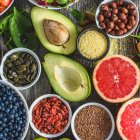 Make Your Tomorrow Healthy by Following a Healthy Diet Plan Today: 10 Healthy Habits of Eating to Adopt in 2020
Make Your Tomorrow Healthy by Following a Healthy Diet Plan Today: 10 Healthy Habits of Eating to Adopt in 2020
-
 Want to Know Which Fruits to Eat and Which Ones to Apply(2020)?Guide on Best Fruits that Can Give Your Skin a Magical Glow.
Want to Know Which Fruits to Eat and Which Ones to Apply(2020)?Guide on Best Fruits that Can Give Your Skin a Magical Glow.
-
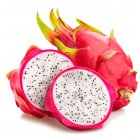 What is a Dragon Fruit and What are Its Health Benefits(2020)? Get to Figure Out the Resplendence of Dragon Fruit and How to Enjoy its Many Amazing Splendors.
What is a Dragon Fruit and What are Its Health Benefits(2020)? Get to Figure Out the Resplendence of Dragon Fruit and How to Enjoy its Many Amazing Splendors.
Nutrify Yourself with Winter Vegetables in Season
Found almost through all seasons are vegetables, unlike certain fruits, most vegetables are there all year round. During winter, it would be best to take advantage of their many benefits. Preparing some vegetable dishes, such as those mentioned above, doesn't take you long. Even better, you can also enjoy vegetable dishes and soups along-side other meals. Above are awesome vegetable dishes that can be prepared with the winter vegetables in season.

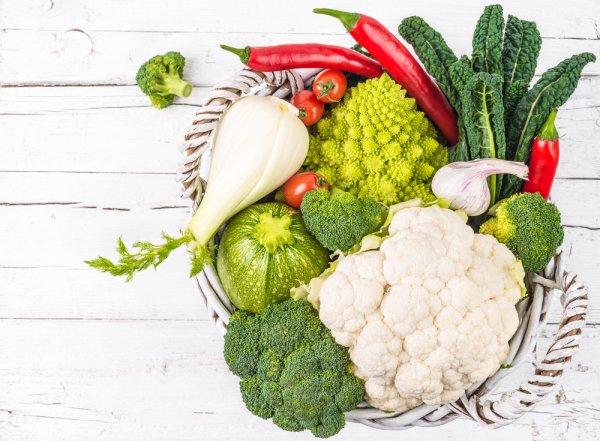
 Highlight the Best Facets of Your Incomparable Beauty: Discover the Best Face Highlighter Currently Available in India and Everything You Need to Know About Using Face Highlighters for Maximum Effect (2023)
Highlight the Best Facets of Your Incomparable Beauty: Discover the Best Face Highlighter Currently Available in India and Everything You Need to Know About Using Face Highlighters for Maximum Effect (2023)
 Forget the Blemishes and Get that Picture Perfect Flawless Radiance on Your Face: Check out the Best Foundations for Oily Skin Currently Available in India and Everything You Need to Know About Makeup Foundations (2023)
Forget the Blemishes and Get that Picture Perfect Flawless Radiance on Your Face: Check out the Best Foundations for Oily Skin Currently Available in India and Everything You Need to Know About Makeup Foundations (2023)
 Make Your Presence Felt Wherever You Go: Discover the Best Perfumes Under 2000 for Both Men and Women to Announce Your Arrival and Make Any Occasion Memorable (2023)
Make Your Presence Felt Wherever You Go: Discover the Best Perfumes Under 2000 for Both Men and Women to Announce Your Arrival and Make Any Occasion Memorable (2023)
 Protect Your Oily Skin from the Harmful Rays of the Sun: Discover the Best Gel Based Sunscreens for Oily Skin and Everything You Need to Know Before Buying One (2023)
Protect Your Oily Skin from the Harmful Rays of the Sun: Discover the Best Gel Based Sunscreens for Oily Skin and Everything You Need to Know Before Buying One (2023)
 Minor Blemishes and Wrinkles Affecting Your Confidence? Check out the Best BB Creams to Conceal Your Worries and Nourish Your Skin to Restore the Healthy, Radiant and Glowing Complexion Back Again (2023)
Minor Blemishes and Wrinkles Affecting Your Confidence? Check out the Best BB Creams to Conceal Your Worries and Nourish Your Skin to Restore the Healthy, Radiant and Glowing Complexion Back Again (2023)
